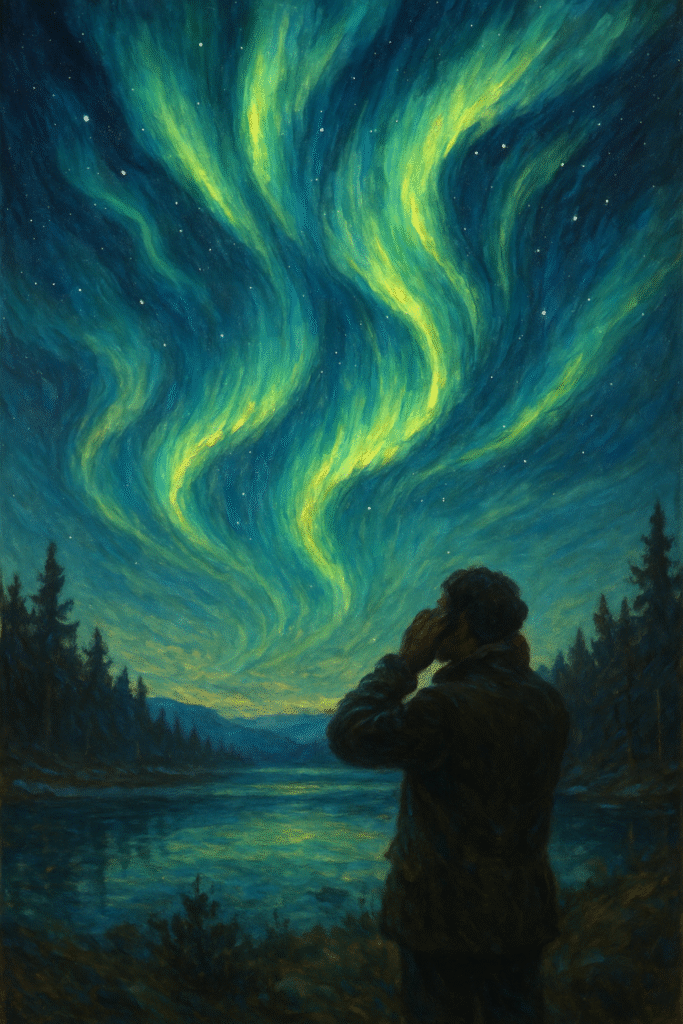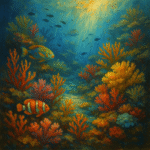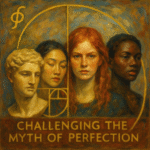The Northern Lights, also known as the Aurora Borealis, are a breathtaking natural spectacle that paints the night sky with vibrant colors. They have captivated human imagination for centuries, invoking awe and wonder among those lucky enough to witness them. While most people are familiar with their stunning visual characteristics, an intriguing question arises: Is there a soundtrack accompanying this mesmerizing display? This article delves into the phenomenon of sound associated with the Aurora Borealis, exploring its scientific basis, cultural significance, and personal accounts that invite readers to engage with nature on a multisensory level.
Introduction to the Aurora Borealis and Its Visual Characteristics
The Aurora Borealis is a natural light display predominantly seen in high-latitude regions around the Arctic. The lights are caused by the interaction between charged particles from the Sun and the Earth’s magnetic field and atmosphere. When solar winds collide with gases such as oxygen and nitrogen in the Earth’s atmosphere, they generate stunning displays of light characterized by brilliant greens, pinks, purples, and blues that dance across the night sky.
Key Visual Features of the Aurora
- Colors: The most common color observed is green, produced by oxygen molecules located about 60 miles above the Earth. Higher altitudes may emit red light, while nitrogen can produce purples and blues.
- Shapes: The Aurora can take on various forms, including arcs, spirals, and corona patterns, where the lights appear to radiate from a central point.
- Movement: The intensity and movement of the Aurora can vary, giving it a dynamic quality akin to natural fireworks.
Witnessing the Aurora Borealis is often described as a spiritual experience, leaving viewers entranced by its ethereal beauty. However, alongside this visual brilliance, some observers confront a phenomenon that seems to transcend the visual realm: sounds.
Investigating the Scientific Basis for Sounds Associated with the Aurora
The idea of sound accompanying the Northern Lights might seem far-fetched, especially given that the Auroras occur at altitudes where human hearing is theoretically impossible. However, emerging scientific studies suggest that sounds may indeed accompany this spectacular event.
Potential Mechanisms Behind Aurora Sounds
- Acoustic Waves: Researchers theorize that the charged particles interacting with the magnetic field and atmosphere could produce low-frequency sounds. These sounds might be generated by small-scale electrical pulses or variations in ionospheric conductivity.
- Geoacoustic Effects: Some scientists have proposed that the interference from Aurora activity can create acoustic waves that travel through the Earth’s crust, manifesting as low rumbles or crackling sounds when conditions are right.
- Plasma Sounds: According to a 2018 study co-led by researcher Dr. A. S. Kozlovsky, the Aurora may generate “plasma sounds” due to rapid changes in electric fields. This phenomenon exists within the theory of time-varying fields producing audible sounds.
- Audio-Visual Unity: A potential source of the auditory experience could be observer expectation. That is, the combination of sights and personal experiences creates a psychological effect where the brain associates visual stimuli with sounds.
Research Findings
Recent studies have begun to shed light on this peculiar relationship. Notable among these is a study published in the journal Geophysical Research Letters, which documents several cases of sounds accompanying the Aurora. Observers reported hearing soft crackling, humming, and snapping sounds underneath the display.
Interestingly, these auditory experiences are genetic; they emerge more distinctly under specific atmospheric conditions, particularly in cold, still conditions prevalent in Arctic areas during the winter months. These findings align with anecdotal accounts from various cultures that have experienced the Aurora for centuries.
Cultural Interpretations and Anecdotal Accounts of Hearing the Northern Lights
The interplay between culture, myth, and science is a rich tapestry surrounding the Aurora Borealis. Many cultures have attributed meaning to this natural phenomenon, often relating it to spiritual experiences or communication from the gods.
Myths and Beliefs
- Indigenous Narratives: For many Indigenous peoples of the Arctic regions, the Northern Lights are imbued with sacred meaning. For example, some Inuit communities believe that the lights represent the spirits of their ancestors playing a heavenly game, while other groups interpret them as a warning or a sign of good fortune.
- Norse Mythology: In Norse culture, the Northern Lights were thought to be the reflections of the shields and armor of the Valkyries leading warriors to Valhalla.
- Modern Interpretations: With the advent of modern societies, the Northern Lights have become a symbol of natural beauty and wonder, inspiring countless artworks, literature, and tourism.
Personal Accounts and Anecdotes
Many who have experienced the Aurora express the wish to convey their entire being’s elation at witnessing such beauty. Among these stories are claims of various sounds accompanying the visual splendor. Observers have reported:
- Soft Whispers: Some describe the sounds as eerily soft, resembling whispers or gentle voices in the wind.
- Rustling Leaves: A common analogy used by viewers compares the sound to rustling leaves, which adds to the ethereal feel of the observable light.
- Crackling Fire: Others have drawn parallels with the sounds of a crackling fire, providing a comfortable and familiar auditory backdrop to the celestial presentation.
These anecdotal observations invite a more profound engagement with the natural world, encouraging listeners to remain attuned to the interplay of their senses when immersed in these natural phenomena.
Conclusion
The phenomenon of sound associated with the Northern Lights invites both scientific inquiry and cultural exploration. While current research remains nascent, the idea of accompanying sounds continues to captivate nature enthusiasts, scientists, and everyday observers. By blending scientific discoveries with anecdotal experiences, we can cultivate a deeper understanding and appreciation for the remarkable beauty of the Aurora Borealis. Imagine standing beneath the shimmering lights, feeling the awe-inspiring visuals while questioning whether the whispers of the Auroras resonate with something deep within our souls. Whether or not sounds are tied to this spectacular display, the chase to understand remains equally resounding.
FAQ Section
Q: Is there scientific evidence that supports the presence of sound with the Aurora Borealis?
A: While the concept remains debated, studies indicate that sounds may accompany the Aurora under specific atmospheric conditions. Reports from witnesses describe faint crackling or humming sounds, suggesting the need for further research on this phenomenon.
Q: What types of sounds have been reported by those who have seen the Northern Lights?
A: Observers have recorded various sounds, including crackling, humming, and even soft whispers. Descriptions often relate these experiences to natural sounds, like rustling leaves or crackling fire.
Q: Are there specific locations where the sounds of the Northern Lights are more likely to be heard?
A: Reports indicate that sounds are more prominent in cold, still environments in Arctic regions where the Aurora displays are frequent, such as northern Canada, Norway, and Alaska.
Q: What cultural significance do the Northern Lights hold?
A: Various cultures, especially Indigenous peoples, ascribe deep spiritual significance to the Aurora. They often interpret them as messages from ancestors or divine beings, influencing their cultural narratives and traditions.
Q: How can I experience the Aurora Borealis?
A: Ideal spots for viewing the Aurora include locations near the Arctic Circle, like Lapland in Finland, Yellowknife in Canada, and Tromsø in Norway. The best time to visit is typically during the winter months for optimal visibility.


